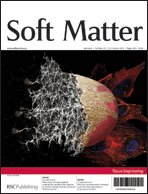A major challenge to the effective treatment of injured cardiovascular tissues is the promotion of endothelialization of damaged tissues and implanted devices. For this reason, there is a need for new biomaterials that promote endothelialization to enhance vascular repair. The goal of this work was to develop antibody-modified polysaccharide-based hydrogels that could selectively capture endothelial progenitor cells (EPCs). We showed that CD34 antibody immobilization on hyaluronic acid (HA) hydrogels provides a suitable surface to capture EPCs. The effect of CD34 antibody immobilization on EPC adhesion was found to be dependent on antibody concentration. The highest level of EPC attachment was found to be 52.2 cells per mm2 on 1% HA gels modified with 25 μg mL−1 antibody concentration. Macrophages did not exhibit significant attachment on these modified hydrogel surfaces compared to the EPCs, demonstrating the selectivity of the system. Hydrogels containing only HA, with or without immobilized CD34, did not allow for spreading of EPCs 48 h after cell seeding, even though the cells were adhered to the hydrogel surface. To promote spreading of EPCs, 2% (w/v) gelatin methacrylate (GelMA) containing HA hydrogels were synthesized and shown to improve cell spreading and elongation. This strategy could potentially be useful to enhance the biocompatibility of implants such as artificial heart valves or in other tissue engineering applications where formation of vascular structures is required.

You have access to this article
 Please wait while we load your content...
Something went wrong. Try again?
Please wait while we load your content...
Something went wrong. Try again?


 Please wait while we load your content...
Please wait while we load your content...